Ultimate Guide: How to Make a Successful Kickstarter Campaign
How do artists, inventors, and entrepreneurs raise money for their big ideas?
Increasingly, the answer is crowdfunding. As the Internet becomes a faster, friendlier, and better-connected place, it has never been easier to raise large amounts of money online.
Kickstarter is the website leading the pack. Since launching in April 2009, 26 million people have joined Kickstarter, together pledging over $328 million dollars to 28,000 projects. Though it’s only available in The United States so far, Kickstarter recently announced that they’ll be expanding to the UK in fall 2012.
The site’s gaining momentum rapidly. In its first two-and-a-half years, no single Kickstarter project raised a $1,000,000. In the last six months, there have already been eight $1,000,000 projects – including one that raised $10,000,000.
Though Kickstarter bills itself as “a funding platform for creative projects,” it’s also a platform for business projects. Crowdfunding expert Scott Steinberg, says that crowdfunding is “about to grow up very fast here,” and that “inevitably, more businesses and profit-minded organizations are going to gravitate there.”
Keep reading if you want to learn how to raise money with a Kickstarter campaign of your own.
But first…
The Story of $10,000,000 Kickstarter Project
The Pebble E-Paper Watch is a “smart watch” capable of being connected to iPhone and Android devices through Bluetooth. It can alert you to incoming calls, emails, and messages with a silent vibration on your wrist or connect with your phone’s GPS to give you information about your speed and distance traveled.
The only problem with the “first watch built for the 21st century” was that it was just a prototype – and 24-year-old founder Eric Migicovsky was having trouble attracting additional money from private investors and venture capital firms.
In April 2012, Migicovsky decided eschew traditional funding in favor of crowdfunding. Pebble Technology launched a Kickstarter campaign with the lofty goal of raising $100,000 in 38 days. They reached $100,000 just two hours after starting. Six days later, the people had already pledged $4.7 million to the project. The final tally was a whopping $10.2 million, making it the most-funded campaign in the history of Kickstarter.
Pebble’s E-Watch clearly struck a nerve with the public. The project was destined for success because the product at its heart was sleek, innovative, and useful. But the funding wouldn’t have rocketed to the stratosphere if Migicovsky and his crew hadn’t done such a fantastic job of crafting their Kickstarter campaign to begin with.
It was perfectly executed, from top to bottom. That’s why I’ll be using Pebble’s “E-Paper Watch for iPhone and Android” campaign as a case study throughout the article.
Is Kickstarter Right for You?
The first step is to have a bright idea along the lines of the Pebble E-Watch. Your project needs to be one that you would actually want to fund with your own money if somebody told you about it. This could be anything from an invention to an app to an ebook.
If you’ve read this far, I’m guessing you’ve already got a bright idea. But if you’re not sure, you don’t have much to lose. Think of Kickstarter as a way to gauge the feasibility of your idea out in public without having to invest any money up front.
Before you dive in, make sure Kickstarter is right for you by checking the requirements below. One in four project proposals are declined by Kickstarter.
Projects Must be Clearly Defined
Kickstarter only funds projects. According to them, a project is something with “a clear goal” that “will eventually be completed, and something will be produced by it.”
That means that they won’t help you raise money for anything open-ended or that requires ongoing maintenance.
Projects Must Belong to Certain Categories
Kickstarter doesn’t allow just any project to be on its site, either. Every campaign undergoes a review process and must be accepted by Kickstarter before it goes live. Yours must fall into one of these categories: Art, Comics, Dance, Design, Fashion, Film, Food, Games, Music, Photography, Publishing, Technology, and Theater.
These categories are pretty broad and there’s a good chance your idea could fall into one of them. But there are also many potential projects that don’t fit under the Kickstarter umbrella (e.g. cosmetics, health supplements, and pet supplies).
Neither does philanthropy. Kickstarter doesn’t allow project creators to raise money for a charity or a cause. And you can’t use it for personal expenses like your tuition or a new iPad.
You can see a full list of Kickstarter guidelines and restrictions here.
What If My Project isn’t Eligible?
Kickstarter is just one of many options for crowdfunding.
Indiegogo is less popular, but also less restrictive. According to Indiegogo’s “Learn More” page, “No matter what you are raising money for, you can start right now with no fee or application process.” Indiegogo is also international, so you can create and fund a project from anywhere in the world.
If you do decide to go with a site other than Kickstarter, that doesn’t mean you should stop reading here. With a few exceptions, the advice contained in this article is applicable to all crowdfunding websites, including Indiegogo, GoFundMe and GoGetFunding.
For a comparison table of crowdfunding sites, you can visit this helpful Wikipedia entry.
One Last Thing before We Begin
Don’t start a Kickstarter campaign expecting the money to flow to you effortlessly.
It will take hours of work to develop the project (you must build it, create a video, and determine the rewards) – but it will take even longer to maintain and promote the project through the funding process. Once the project is successful, your job is far from over. You must then use your newfound capital to complete the project and distribute the rewards to your backers.
Still ready to create your own campaign? Good.
Getting Started
Begin Early
“As you build your project, take your time! The average successfully funded creator spends nearly two weeks tweaking their project before launching. A thoughtful and methodical approach can pay off.”
From Kickstarter.com
You should start building your project a month in advance of when you’re planning on launching. That will give you plenty of time to fine-tune it and build up anticipation amongst your network.
You’ve also got to account for Kickstarter’s review process. According to Kickstarter Cofounder Yancey Strickley, they strive to respond to each new proposal within 24 hours. But they do get bogged down with submissions and it can take as long as a week in some cases.
Start early and you won’t have anything to worry about.
Create a Kickstarter Profile
In order to use Kickstarter, you must create a simple account. It requires only your name, email, and password and takes about 30 seconds to set up.
But if you leave it that, you’ll be represented by an amorphous blue square in all of your Kickstarter activity for the rest of your days. You’ll also miss the opportunity to make a personal connection with the Kickstarter community and to link to your website.
Many founders set up a personal account, but Eric Migicovsky decided to make a profile for his company, Pebble Technology. This has the benefit of making his project seem more official, reputable, and dependable. But it also makes it harder to create a human, emotional connection with the Kickstarter community.
How to Start Your Own Successful Kickstarter Project
Choosing a Project Image
Your project image is the single most important branding element of your project. It will be most of your backers’ first impression of your project. So try to get an eye-grabbing, iconic image that can represent your project well whether it’s small or large.
Kickstarter recommends dimensions of at least 640×480 pixels and a 4:3 aspect ratio.
Choosing a Project Title
This isn’t very different from choosing a title for a blog post. Try to include some important keywords while still striking up curiosity.
How to Set Your Funding Goal
This is one of the smallest but most difficult tasks when setting up your project. While I can’t tell you how high or low you should set your goal, I will give you a few factors that will help you make that decision for yourself.
It’s All-or-Nothing: Kickstarter uses an all-or-nothing funding model. That means that the pledges are only redeemable if you meet or surpass your goal. You can always exceed your goal, but if you come up a dollar short, you get nothing.
The Cost of Your Project: This is the single most important factor in determining your goal. You must raise enough money to advance your project and fulfill all of the rewards – or you’re doing yourself and your supporters a disservice.
The 20% Threshold: Statistically speaking, when you start your Kickstarter project it has a 56% of failing. If you don’t like those odds, don’t fret: once a project a project is 20% funded, its chance of failing drops to a measly 11.3%.
When considering your project goal, think about that 20% threshold. Will you be able to surpass it with your initial burst of funding? If the answer is yes, then you’re likely in good shape to proceed.
Setting a Project Deadline
A Kickstarter project can be last as long as 60 days, but longer isn’t necessarily better. In fact, projects lasting 30 days or less actually have a higher success rate.
Kickstarter explains why:
“Shorter projects set a tone of confidence and help motivate your backers to join the party. Longer durations incite less urgency, encourage procrastination, and tend to fizzle out.”
How to Create Effective Kickstarter Rewards
An angel investor doesn’t make an investment out of the goodness of her heart: she does it for equity in the company.
Likewise, people need an incentive to invest in Kickstarter projects. But instead of equity, they’re happy to receive rewards in exchange for their pledges.
Rewards are the engine behind every successful Kickstarter project. They are most often something tangible, like a product or memento from your campaign. But they can also come in the form of a creative experience or a collaborative role in the project.
I’m going to go into special detail about rewards for two reasons. (1) They’re the main reason crowdfunding works and (2) they’re the easiest part to mess up.
What Should Your Rewards Be?
The most effective type of reward is one that flows naturally from the completion of the project. Your campaign is at a big advantage if it will yield a product that people want (e.g. a book, album, movie, or piece of software). It just makes sense: if somebody likes what you’re planning to create, they’re going to want a piece of the final product, and they won’t mind laying down some moula to pre-purchase it.
But your campaign will be missing out if that’s all you have for rewards. Kickstarter commonly observes three other types of rewards:
- Creative collaborations: a backer appears as a hero in the comic, everyone gets painted into the mural, two backers do the handclaps for track 3.
- Creative experiences: a visit to the set, a phone call from the author, dinner with the cast, a concert in your backyard.
- Creative mementos: Polaroids sent from location, thanks in the credits, meaningful tokens that tell a story.
These types of rewards have to be unique to your project, but if you want some help getting the juices flowing I suggest you check out http://www.kickstarter.com/discover.
How to Price your Rewards
According to Kickstarter’s school, the most popular pledge amount is $25, but it’s best to offer something for everything from very small to very large budgets.
Even if your product is expensive, it’s important to create at least one reward for less than $20. Projects without a reward less than $20 succeed only 35% of the time, whereas projects that do offer a reward less than $20 succeed 54% percent of the time.
Above all, price your rewards fairly and make sure you’ll be able to fulfill them after your project is successfully funded.
Consider making the pledge cost less than the eventual cost of the product. It’s a nice way of thanking your backers for their early support and it will encourage more pledging. In Pebble’s case, the default pledge amount to receive a watch was only $115, whereas the planned retail price is $150.
Case Study in Effective Rewards: Pebble Watches
Below are lessons in rewards from Pebble’s campaign:
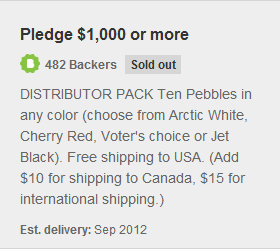
Format Clearly
It’s important for your rewards to be concise and easy to read. Otherwise people won’t bother to see what you have to offer.
Look at the example from Pebble’s page to the right. Notice how they use capitalization to make the reward title obvious and to get people’s attention. They then use parentheses to further distinguish between the details of the reward.
This formatting style is very effective given the limited space and options available.
Get Momentum with an “Early Bird” Reward
Pebble created a sense of urgency at the beginning of their campaign by offering a limited number of their watches for just $99. Here’s the text from the reward:
EARLY BIRDS Help us get started! One Jet Black Pebble watch. This watch will retail for more than $150. Free shipping to USA. (Add $10 for shipping to Canada, $15 for international shipping.)
Since this reward was only available to the first 200 backers, it encouraged the first wave of people who viewed the project to act immediately (always a big plus when it comes to encouraging action online). I would guess it also contributed to the project’s virality early on, because people are more likely to talk about a purchase when they see it as a deal and because they want their friends to get the early-bird discount too.
Encourage Buying in Bulk
Offering multiples of your product is a good way to make some high-value rewards and start taking bigger bites out of your funding goal.
Pebble offered four rewards that offered discounts for people who wanted more than one E-watch: two for $240, an “Office Pack” of five for $550, a “Distributor Pack” of ten for $1,000, and a “Mega Distributor Pack” of one hundred for $10,000.
Believe it or not, they had 31 backers of the Mega Distributor Pack. So that’s over three times what they initially hoped to raise right there.
Note: According to Kickstarter’s official guidelines, projects aren’t supposed to offer rewards with bulk quantities of more than ten. It’s possible that Pebble’s Mega Distributor Pack slipped past the Kickstarter team because Migicovsky didn’t add it in until after the project had already been approved.
Offer Limited Edition, Premium Rewards
Pebble offered a prototype E-watch and early access to Pebble’s Software Development Kit to the first 100 people willing to donate $235 to their campaign. This “Hacker Special” was only available to the first 100 eager software developers.
Pebble also offered a custom-designed watch face for the first 20 people willing to lay down $1250 to receive a one-of-a-kind Pebble E-Watch. Believe it or not, even at that high price-point all 20 of the custom watches sold out.
Some backers will be looking for rewards that set make them feel special. Give them a reason to pledge by making a limited number of unique, creative, or potentially collectible rewards.
Offer a Discount Option:
Eight days before Pebble’s Kickstarter campaign was supposed to end, they decided to limit any further preorders. They already had millions of dollars and about 85,000 watches to manufacture and distribute.
But instead of shutting down the project entirely, they created a new reward for a pledge of just $1. Here’s the text from the reward:
Didn’t get a chance to back Pebble before it sold out? Pledge $1 and keep up-to-date on all things Pebble with exclusive updates, Pebble availability or more.
Even though there was only a week left in the campaign at this point, this $1 reward still attracted 2,615 backers. Not only is that an extra couple thousand dollars in the bank for Pebble, they just built a healthy and well-qualified email list through Kickstarter.
Don’t Forget Shipping Costs
You should factor the price of shipping the rewards into the reward price point. Keep in mind that some backers may live outside of the country and will therefore be more expensive to ship to.
Pebble concluded each of their rewards with shipping information: “Free shipping to USA. (Add $10 for shipping to Canada, $15 for international shipping.)”
How to Tell Your Story on Kickstarter
Now comes the fun part: making a video and filling out the project description. This is your opportunity to explain why your project matters and why you need people’s help.
Make the Perfect Kickstarter Video
I’m guessing you know how important video is to increasing conversion in online sales, but the exact same is true of crowdfunding. According to Kickstarter, “projects with videos succeed at a much higher rate than those without (50% vs. 30%).”
There are no rules when it comes to video, which is part of what makes it intimidating to some people. If you’re looking to get some ideas flowing, Kickstarter spotlighted their 12 favorite videos from 2011 on their blog.
Those videos are jaw-dropping – and a big part of why their campaigns were successful – but your video can be as simple as you sitting in front of a web camera and telling your story.
On the other hand, some campaigns call for a professionally produced video. Pebble’s video clearly has extremely high production values, but don’t let that intimidate you. What makes their video effective isn’t the quality of its production; it’s the quality of its message that really matters.
Watch it below and then I’ll walk you through why it works so well.
Case Study in Effective Video: Pebble Watches
 Click the Image Above to Watch the Video
Click the Image Above to Watch the Video
Begin on a Personal Note
“Hi Kickstarter, my name is Eric.”
The first shot is of founder Eric Migicovsky introducing himself. This allows viewers to begin feeling a personal connection to the project. The human element is reinforced about fifteen seconds later when Migicovsky introduces “the dream team.”
Summarize the Project Early
“Pebble is a watch that you can customize. It runs a lot of cool and useful apps. And connects wirelessly by Bluetooth to your iPhone or Android smart phone.”
Some videos spend 45 seconds dilly-dallying before they even explain what the project is all about. That’s a good way to lose a lot of people’s interest.
Before we’re 20 seconds into Pebble’s video, we know exactly what the Pebble is and whether or not we want to keep watching. You should follow suit by summarizing what your project is all about in a ten second blurb.
Tell Your Story
“It started with a prototype built from cell phone parts. That led us to our first commercial product, the Impulse Smart Watch for Blackberry. The number one question we received was, ‘When will the watch work with my iPhone?’ Well, we’re proud to say that we can finally answer that question.”
The story is a powerful communication tool. Pebble’s video begins to tell a story and it invites the viewer to be a part of that story’s triumphant conclusion. The most amazing part is that this takes only about 15 seconds.
Pebble used a series of images to tell the story more quickly, including screenshots of their old website and articles that had been written about them.
Get into Your Project’s Features, Advantages, and Benefits
“It’s the only watch that works perfectly with iPhone and Android smart phones. Pebble is much smaller and lighter than anything else out there. It has a high-definition e-paper display that looks sharp and readable even in direct sunlight.”
The bulk of the Pebble video is spent communicating all of the amazing qualities of the Pebble E-Watch. Migicovsky talked later about the importance of making sure people realized how the watch could make their lives better:
“Probably the best thing we did with our Kickstarter page was our ‘use cases’. We knew that no one really wakes up in the morning with a desperate urge to buy a smartwatch, so it was our job to figure out exactly how to explain to future users how they will be able to use Pebble.”
Eric Migicovsky, from an interview in Shopify
Wrap it Up with a Call to Action
“So that’s Pebble. We’ve finished the design, and we’re just about to start production. But we need help to get Pebble on your wrist. We hope you’ll join us. Thanks.”
The Pebble video concludes brilliantly. It lets people know what stage of development the project is in and informs the viewer that they “need help” in order to bring the watch to market.
Of course, thanking your viewer at the end is a nice touch. After all, they’ve just taken time out of their day to consider funding your vision.
Still Have Questions about Video?
Video is my forte and I’ve produced a handful of videos for Kickstarter campaigns through my video production company. There’s too much that goes into a great video to cover fully here, so if you still have questions feel free to ask me a question in the comment section below and I’ll do my best to respond promptly.
Writing Your Description
This is the place where you can go into full detail about your project. Unlike with the video, there’s no time limit and people can skim through to the parts they’re interested in.
For that reason, you may as well go all-out and think of the description area as a long-form sales letter. Include all the little details about your project, where it’s at, and how you’re going to bring it into fruition. Explain exactly why you need the money and where it’s going to go.
Above all, make sure you address any concerns or objections that a potential backer may have. It’s a good idea to show a few people your project prior to launch and then pick their brain. They’ll probably have a few questions you never thought about – and you can address them there.
Case Study in Kickstarter Description: Pebble Watches
Not surprisingly, Pebble did a fantastic job with their description area. The best way to understand it is to simply go their Kickstarter page and check it out for yourself.
Direct People’s Attention to the Video
At the very top of Pebble’s description area is an image pointing up and making sure people watch the video first. This is a good idea, as your video will be the most engaging part of your message.
Put Updates to the Project at the Top
“We’re absolutely blown away by your support, Kickstarter. $1M in 28 hours!”
Pebble updated its description area as the project advanced. This is a good idea if there are any big updates, new rewards, or changes to the project.
If you get some great comments or media publicity, you may want to share these in an update as well.
Get into the Nitty Gritty
Pebble used over 1,200 words in its description. It went into detail about how you could customized the watch, how it actually works, what it can do, where the project’s at, what rewards they’re offering, and finally they offered a list of frequently asked questions.
Not only does a robust description area help answer people’s questions, it also shows them that you’re taking this project seriously and willing to put in the work.
Interested in a Pebble E-Watch?
You can learn more and pre-order a watch of your own at their official site.
Prepare for Launch
After you complete your description, all that’s left is filling out some account information that will allow you to get paid upon the successful funding of your project. In other words: you can breathe a big sigh of relief.
If there’s anything I missed, please feel free to let me know. Like I said, I’m happy to answer any questions in the comment section because I would truly like this to be a comprehensive Kickstarter resource. Another great resource is Kickstarter School, which the website offers to help guide project creators.
What’s Next?
So, you’ve set your funding goal, determined your rewards, and told your story. Congratulations – you’ve successful created an awesome Kickstarter project.
But if you think you’re all done, you’ve got another thing coming.
This is when the promotional work begins. Filmmaker Whitt Scott explains how he promoted his project and raised $34,133 to make a movie about throwing toilet paper rolls at houses:
“I woke up in the morning during the campaign and started messaging people and blogs. I did it all day every day for thirty days.”
Promoting and updating your Kickstarter campaign doesn’t have to be a full-time job, but it is important that you don’t expect it to be on auto-pilot from there. The more you put into these things, the more you’ll get out of them.
Once you’ve successfully funded your project, the fun begins: using your newfound wealth to bring the project to fruition and delivering the rewards to your project backers.
Best of luck and happy funding!
"Do Not Write Another Blog Post Until You Watch This Free Video..."
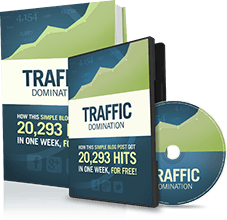
Watch this free video to learn...
- How I got over 10,000,000 people to visit my websites.
- The types of blog post that got me all that traffic.
- How to get someone else to do it for you!


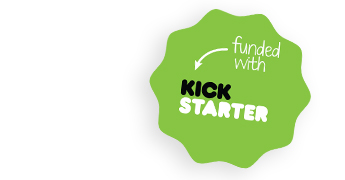

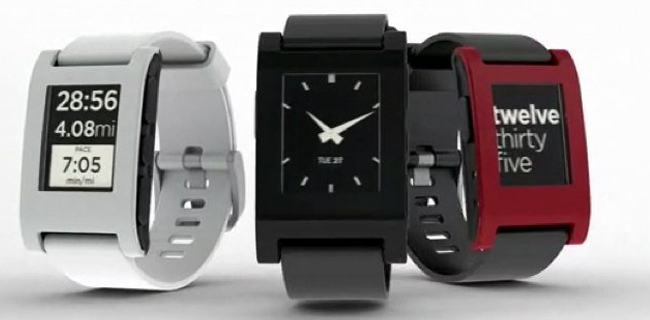

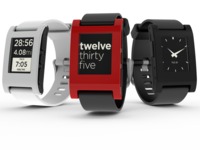









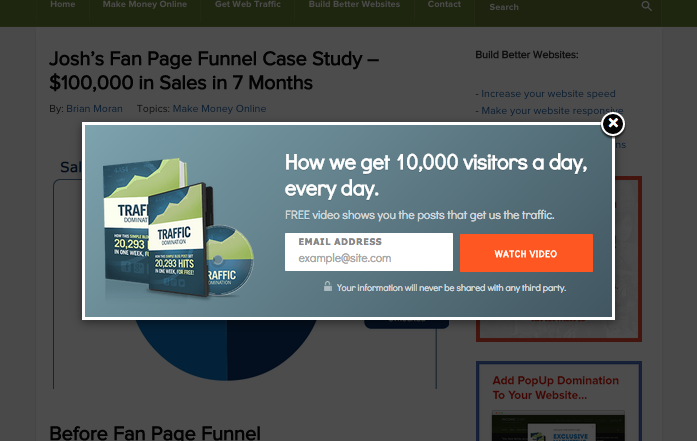
What a very long and informative post Nick,
One thing i love here is “It’s important for your rewards to be concise and easy to read. Otherwise people won’t bother to see what you have to offer”
I can’t agree more because a lot of markers think that a long sales letter is the best, but always end up loosing their clients. It has happened to me too.
Thanks for sharing
I’m not a sales letter expert, but there’s a reason long ones are so popular. They can go into detail about the product’s features and answer all objections. That’s why I recommend a long description in your Kickstarter project. If people don’t want to read it all, they can skim.
Awesome post man – really went above and beyond here! Been thinking about creating a KickStarter campaign for a few mobile app ideas – this is really going to help me. I like your thinking in that KickStarter can be a way to judge how viable your idea is before you spend thousands in development costs to produce it.
The real challenge for me at this point would be thinking of things I could use as give-aways for a mobile app. Of course I could offer a promo code for a free download, however that’s only worth the price of the app (which could be only $0.99 or even free) and plus Apple limits you to only 50. I’m going to have to get creative in order to find something of value to offer. Maybe I could make a tab on the app that lists the top donors? So they can show their name in the app to their friends? Kind of like movie credits I guess…I don’t know.
Thanks again for the awesome post!
Thomas
Yeah the low price-point of an app means that you’re going to need a lot more than 50 giveaways in order to make a Kickstarter campaign worth your time. Maybe there’s a workaround other than promo codes to give away more than 50 as rewards. I think that offering donors some special recognition in the app is a great idea and for really big backers, maybe you can think of something even more special than just their name…
Nice writeup. I hear they’re opening funding for UK users in autumn too. Would be good to see a comparison of the different funding options for startups if you get the chance. Some require equity shares and others don’t. There’s probably a ‘best fit’ depending on what sort of business you’re planning.
Yes – there are a lot of different options out there for crowdfunding right now and you’re right that different ones are better for different campaigns. An analysis of which one is right for what type of business might be a great article. Thanks!
Woooowww!!! absolutely AWSOMEEE! It blows my mind! I’m sorry but I don’t want to share this info haha
Greets from Paraguay
Thanks for the great summary on Kickstarter. I’ve had my project approved for a week but can’t for the life of me get a video to upload properly and was hoping you might have some advice. I’ve tried .mov, .mp4, .avi, and 3gp, but get an error message from all of them. Is there a specific file size, format, or set of output options that you’ve found works?
Hey Nick
I am developing a mobile game and I was thinking of giving small gift items as part of the giveaways like keychains plush toys and other accessories. What are your thoughts?
Mohamed
Good write-up. The Pebble was a huge success, but it was a kickstarter outlier. A $10,000 success outcome is much more realistic. That said, read and heed the tips above: the amount of work going into the campaign will be more than you expect, regardless of funding level.